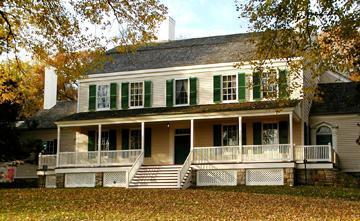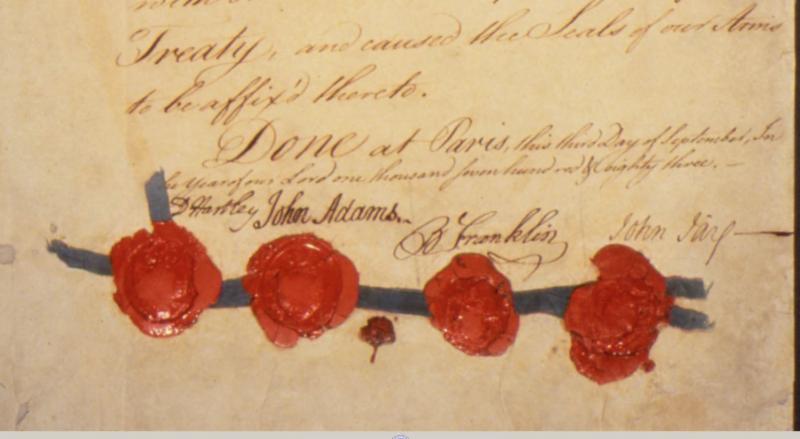City Journal is a fantastic and fantastically influential quarterly magazine that I have read regularly over the years (subscribe here).To salute the magazine’s milestone, and bring the magazine to the attention of readers who might not be familiar with it, I submitted a set of questions to long-time editor Myron Magnet (now retired) and his current editor Brian Anderson, his successor.
Below is my exchange with Mr. Magnet. Let me say myself right here at the top, it is worth reading.
Power Line: What has City Journal wrought? What do you think have been your biggest accomplishments of the past 25 years?
Myron Magnet: These first two questions are really one, so let me answer them together. First, because of the seriousness of our arguments, and the rigor, intellectual honesty, and talent of our writers, we made conservatism respectable in New York City–Moscow on the Hudson, it used to be called. We were in effect Rudy Giuliani’s ideas factory–he once held up a copy of City Journal during a speech and said, “I don’t know if it’s possible to plagiarize policies, but if it is, then this is where I plagiarize mine from.” And the truth is, that we would make suggestions–about quality-of-life policing, say, or how to deal with the homeless, or how to reform welfare–and, amazingly, he often would try them out. Equally amazing, they would work. So it was very exhilarating to run a quarterly magazine with that kind of influence, and very moving to have played a role in the breathtaking rebirth of New York.
Remember that when we started, New York was crumbling. People and companies were fleeing what they saw as a dying and ungovernable city; Times Square was a monument to degradation and squalor; the parks were dustbowls populated by muggers and dope dealers; the streets and subways swarmed with madmen, sometimes threatening and sometimes merely pitiable; and, with one murder every four hours every day, we all lived in fear, so no one wanted to go out at night to restaurants and theaters, which were withering away. People from out of town, or New Yorkers too young to remember the bad old days of just over two decades ago, see the glittering metropolis of today and have no idea of the immensity of effort it took on the part of so many to create that urban wonderland out of such threat and decay. To give you a sense of the magnitude of the change: The now-trendy Lower East Side, as well as hip Williamsburg (and much of Brooklyn), were abject slums in those days, very squalid and very, very dangerous. On the Upper East Side and the Upper West Side, houses and apartments that command millions today sold for under $100,000. No one wanted them.
When the planes hit the towers on 9/11, our Fall issue was just ready to go to the printer. We tore it up and started over, on the view that this was our city and we needed to address the question of how to rebuild it and keep its economy vibrant immediately, so we even got some architect friends of ours to redesign the street grid at the World Trade Center site, and we asked our friend the great Scottish sculptor, Alexander Stoddart, to design a memorial to the victims, infinitely more fitting and moving than the vacuous hole-in-the-ground, void of meaning, that ultimately took form there. We also needed to learn and explain who our enemies were and how to protect ourselves from them, so we were early to examine the nature of Islamism and to understand that, while we must protect the rights of Moslem-Americans, we must carefully screen future Moslem applicants for immigration for Islamist sympathies.
Power Line: Where does City Journal fit in the conservative intellectual universe?
Myron Magnet: Though we are true free marketers, we are not libertarians, because we share the Founding Fathers’ belief that men are reasoning rather than reasonable creatures, with complex motives that ensure that even in business, men don’t always pursue their rational self-interest, and certainly not the long-term rational interest of their city or nation. Though we are full-throated fans of business, we hate crony capitalism, which in our state, with its two legislative leaders currently on trial for bribery and corruption, is a way of life. While we believe in free trade and the free movement of capital, we are more skeptical about the free movement of labor, since we believe that one pair of hands is not interchangeable with another, for those hands are attached to a head, a heart, a skill set, and a culture. Especially now that we have a giant welfare state and little agreement about what kind of culture we’d like immigrants to assimilate to, we’d like to choose our immigrants based on how they and their children can add to the wealth and well-being of the nation, to become creators of prosperity rather than dependents. And since we are not based in Washington, we are willing to examine and question every orthodoxy and consider every new policy idea, whether or not it has a realistic chance of passing into law now. Moreover, some of us belong to the “question authority” generation, and started out to the left of center. So we know that experience has changed our views–which makes us take nothing for granted and question everything, even our own assumptions.
Power Line: I love the magazine’s cultural coverage. Conservatives seem to be on the losing end of the culture wars. What have you sought to do with your cultural coverage?
Myron Magnet: We believe that culture–ideas, beliefs, ideals, loyalties, and mores–shape a nation more powerfully than political or social policies, which are themselves originally shaped by culture. So we have devoted a lot of attention to how to strengthen families, how to raise and educate children to succeed, how sexual mores are changing both for good and for ill. Literature, television, journalism, entertainment, of the past as well as the present–all these are transmitters and shapers of culture, so we examine them seriously, if sometimes a little lightheartedly. And sometimes censoriously: does gangsta rap do anything to uplift the urban underclass, or does it degrade it? We’d prefer a culture that nurtures every imaginable variety of human excellence. That’s what the ideal city, a theater of talent and ambition, is for.
As we are at base an urban-policy magazine, we take very seriously Winston Churchill’s profound observation, which has everything to do with cities: “We shape our buildings, and then our buildings shape us.” So we are passionate about architecture, resolutely opposed to those modernist and postmodernist starchitects who believe that buildings are machines for living rather than enhancements of humanity. For them, people are interchangeable cogs or ants in an ant colony, not humans with souls.
Our belief in the primacy of culture made us perhaps the first conservative magazine to express deep skepticism of the Bush administration’s “freedom agenda” in Iraq, much as we supported President Bush and the war. You can’t make democratic republicans out of tribal people with fanatical religious hatreds against one another and the rest of the world. America’s democratic liberty is an immense cultural achievement, centuries in the making.
Power Line: I can’t go without asking about Heather Mac Donald. She has been an inspiration to me and made herself something of a national resource on the subjects she writes about. I’m sure I’m not alone. Can you say anything about Heather’s contributions?
Myron Magnet: When I took the helm of City Journal in 1994, we thought that, to save the city, we’d need to solve all its problems at once: crime, taxation, regulation, education, rent control, and so on. We discovered that, with such a rich inheritance from the past–museums, orchestras, opera companies, theaters, restaurants both fancy and homey, beautiful buildings, global banks, universities–all we needed to do was make people feel safe in the streets, their homes, and their hotels, and tourists would flock in, New Yorkers would go out, and the city would flourish.
Heather made herself City Journal’s–and the nation’s–Number One expert on policing, aside from Bill Bratton, Ray Kelly, and their top deputies. In the early days of the magazine, she was the principal explainer to the public of what Bratton and Giuliani were doing about crime, and enough people found her sufficiently persuasive to support the NYPD, let it do its job (despite constant carping from the academic criminologists and the New York Times), and appreciate the miracle it wrought. Now that police are under attack nationwide and what Heather dubbed the “Ferguson Effect” has made cops back off, with a resultant jump in crime, Heather is once again the nation’s most tireless and persuasive defender of activist policing. She knows everything there is to know about the subject, from how to train cops, deploy them, mange them, and assess their performance, so that they don’t solve crimes after they have occurred but instead prevent crimes from happening in the first place–something no one imagined could be done before City Journal and the Manhattan Institute, its publisher, suggested it could.
In my first years running the magazine, I’d spend hours every week on the phone with Heather, as she’d worry over every detail of her story, to make sure the logic had no holes, the argument was fair, her answers to possible objections persuasive, and so on. These were among the most intellectually stimulating conversations I dare say any editor ever had. And I know that, in addition to her scrupulous intellectual honesty and rigor, her amazing intelligence, her stringent perfectionism, Heather (a lapsed lawyer) is as curious as any scientist and as brave as Hercules, willing to go into any neighborhood in any city, ask any question of anybody, and get answers that illuminate. Intellectually courageous as well, I might add, for when we started, to suggest that criminals, not “society,” were responsible for crime was immediately to be shunned as racist. But of course the greatest beneficiaries of New York’s crime drop are residents of minority communities where crime was worst. Now that residents don’t have to be afraid to let their kids ride bikes outside or go to the corner store for bread, civic life can again flourish there.
Two final points. Heather can write about anything, from “Hip Hop 101″ at a “progressive” NYC public school to affirmative action and its fruits in the universities to classical music. Second, we have been blessed with a brigade of great writers, who made City Journal what it is.
Power Line: What would you like interested readers who are unfamiliar with the magazine to know about it?
Myron Magnet: Take a look at the website here — it’s free and unencumbered by any advertising, and judge for yourselves.






